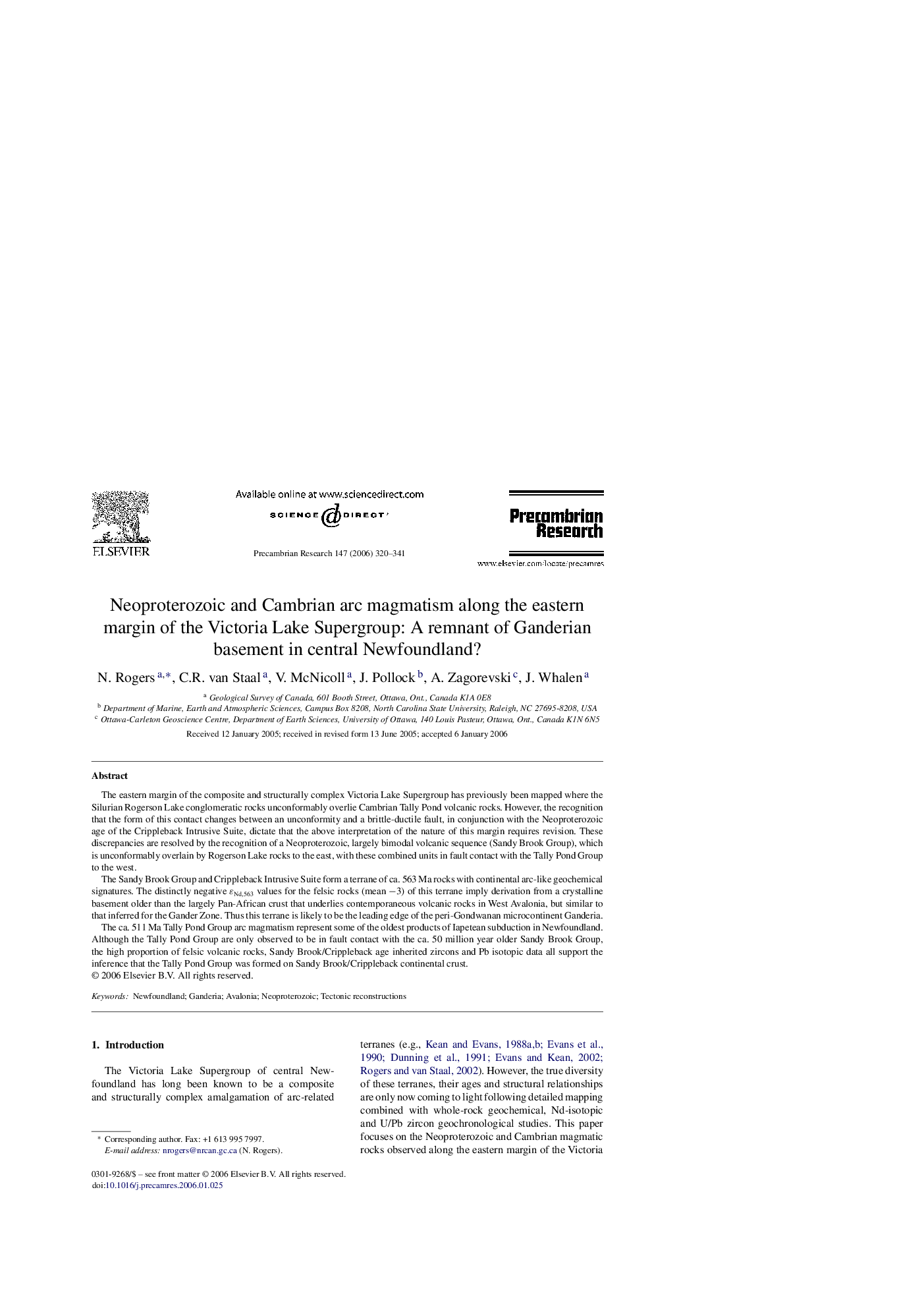| Article ID | Journal | Published Year | Pages | File Type |
|---|---|---|---|---|
| 4724799 | Precambrian Research | 2006 | 22 Pages |
The eastern margin of the composite and structurally complex Victoria Lake Supergroup has previously been mapped where the Silurian Rogerson Lake conglomeratic rocks unconformably overlie Cambrian Tally Pond volcanic rocks. However, the recognition that the form of this contact changes between an unconformity and a brittle-ductile fault, in conjunction with the Neoproterozoic age of the Crippleback Intrusive Suite, dictate that the above interpretation of the nature of this margin requires revision. These discrepancies are resolved by the recognition of a Neoproterozoic, largely bimodal volcanic sequence (Sandy Brook Group), which is unconformably overlain by Rogerson Lake rocks to the east, with these combined units in fault contact with the Tally Pond Group to the west.The Sandy Brook Group and Crippleback Intrusive Suite form a terrane of ca. 563 Ma rocks with continental arc-like geochemical signatures. The distinctly negative ɛNd,563 values for the felsic rocks (mean −3) of this terrane imply derivation from a crystalline basement older than the largely Pan-African crust that underlies contemporaneous volcanic rocks in West Avalonia, but similar to that inferred for the Gander Zone. Thus this terrane is likely to be the leading edge of the peri-Gondwanan microcontinent Ganderia.The ca. 511 Ma Tally Pond Group arc magmatism represent some of the oldest products of Iapetean subduction in Newfoundland. Although the Tally Pond Group are only observed to be in fault contact with the ca. 50 million year older Sandy Brook Group, the high proportion of felsic volcanic rocks, Sandy Brook/Crippleback age inherited zircons and Pb isotopic data all support the inference that the Tally Pond Group was formed on Sandy Brook/Crippleback continental crust.
